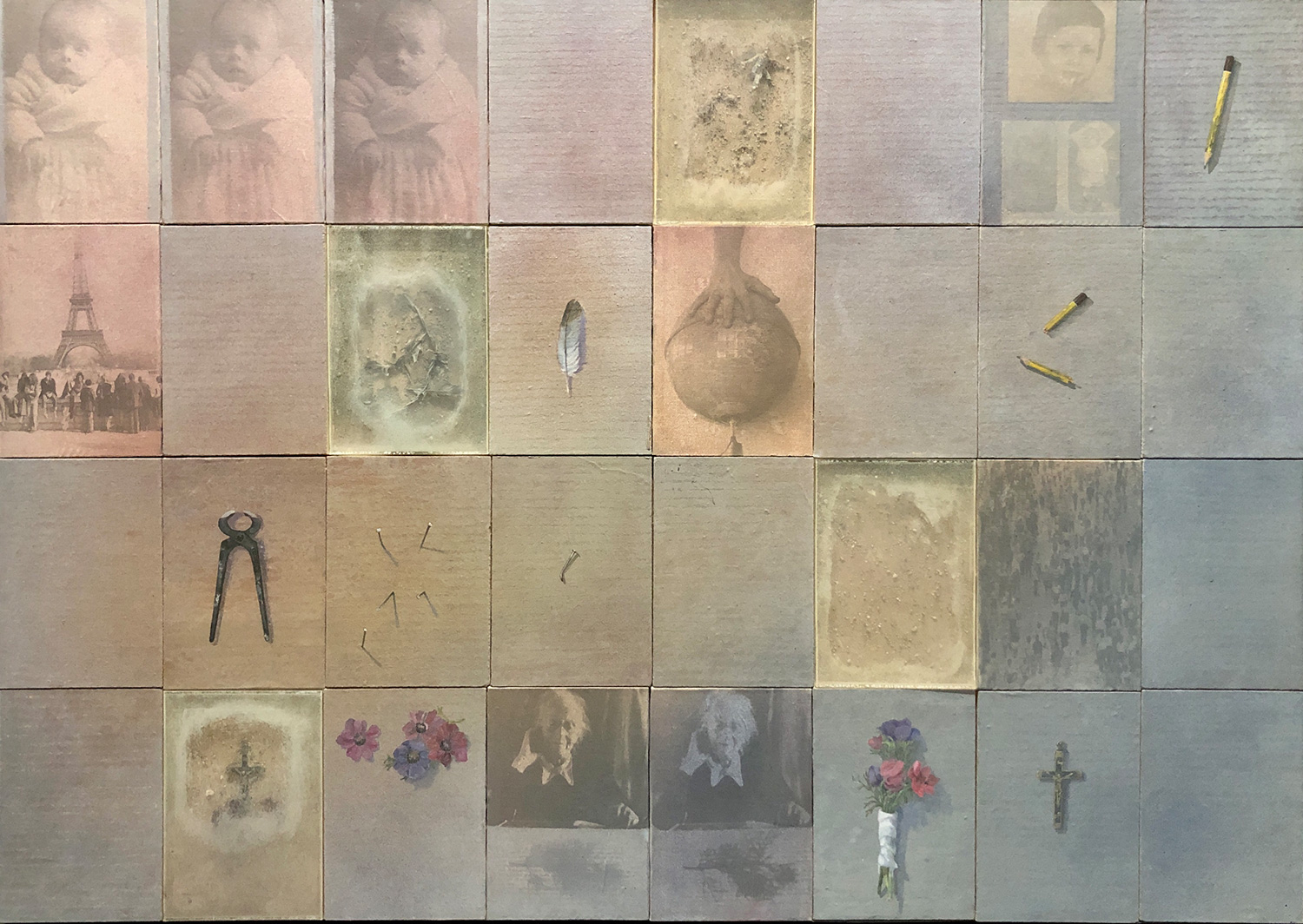


Teresa Gancedo Discourse about reality


“I think that my current artistic work could be defined as a tremendous effort to grasp reality: I say grasp, that is, assuming it, internalizing it, passing it through the sieve of my experiences, memories, unconscious thought, and then show it along with all the strange discoveries that arise from the fusion of the two realities: the external given and the internal felt.” – Teresa Gancedo
 Teresa Gancedo, Discourse about reality (1978)
Teresa Gancedo, Discourse about reality (1978)
ARTIST STATEMENT
The artist explains that her artistic process starts with a photograph found in the media, or taken by the artist herself. She then develops and interiorises the idea taken from the picture and fuses it with internal and external realities. This usually results in an object treated in two ways: one consists of hyper realistic painting, and the other incorporates the untreated object directly into the artwork. She explains that she sometimes includes what she calls a “visual trick” to surprise the viewer and invite them to approach the object and follow the entire narrative circuit. Her intention, she clarifies, is “to use art as a container of feelings and put the viewer in the search of a code to interpret them”.
Gancedo explains that time is “captured through the deterioration of the image. The images used are always frozen in time, resounding, without movement. However, mobility is represented. It is the mobility that the passing of time has on a given space.”
When first reading Teresa Gancedo’s artwork, one comes across a sequence of 32 compartments of realistic images held together by the soft tones that spread across the art object. At a first glance these units – or chambers – seem to form a collage of photos and objects, however upon closer inspection, one realises that Gancedo’s “visual trick” has been put to use, and what looks like a photographic print is actually painted oil on canvas.
Discourse about reality seems to be a discourse about Time, perhaps about life itself. The three painted replicas of a photograph portraying her husband as a baby start a sequence which ends with a simple bunch of flowers, a painted cross and a void. In between one finds an assortment of heavily symbolic objects – or representations of said objects – to create a sequence of lived moments frozen in time.
The speed of time changes within the arrangement. The media (or hyper realistic representation of the media) and its content are often in dialogue with each other. A photograph capturing an instant ages and fades, whereas a potentially explosive moment seems to be paused infinitely. In between are imagined moments: a whole pencil breaks; a pigeon flies away leaving a feather behind, the feather ages in its prison of barbed wire; a set of nails hammered into a surface are repeated yet changed: one panel exhibits the real nails, whereas in the other they are painted – the third panel is a painted version with one bent nail placed on a surface. A toy soldier seems to be frozen in a blast, or left behind and forgotten. The encompassing panel is treated in the same way as that of the aforementioned nails and another that holds an actual semi buried cross, thus creating a link between the three segments, that in turn relate to other motifs spread across Gancedo’s work creating a shifting association of meaning between the panels.
This association of meaning with its layers of interpretation are what attracted me to this piece in the first place. Just like the curatorial project itself, this art object relates to a specific period of time and our contemporary understanding of it. Pockets of history are illustrated by contemporary local and international artists. Just like Teresa Gancedo, each artist was presented with an external subject (in this case a particular moment in the history of Sants and les Corts), which they then developed and interiorised. They, just like Gancedo, produced a real object artwork which was then photographed, digitalised and uploaded to the internet, to be accessed from the same location, in a different time on a new channel with it’s own “visual trick”: your mobile phone.
This piece belongs to the Suñol Soler Collection. It can be visited at the headquarters of the Fundació Suñol during opening hours. If you want to see it, please contact the team in advance.
Sources: “The world in the hands of Teresa Gancedo” from the book accompanying the Teresa Gancedo exhibition held at MUSAC (2018-2019) curated by Manuel Olveira, Teresa Blanch’s text about Teresa Gancedo (Artsy), “Teresa Gancedo, Discourse on reality. Work done between 1976-1979 “, Museum of Contemporary Art of Seville (1979),” and “Teresa Gancedo” Vandrés Gallery, Madrid (1981)
DISCOVER THE ONLINE WORKS THROUGH A ROUTE ON YOUR DEVICE
For more information on the other works of art participating in the exhibition, see Related Exhibitions
Compartir